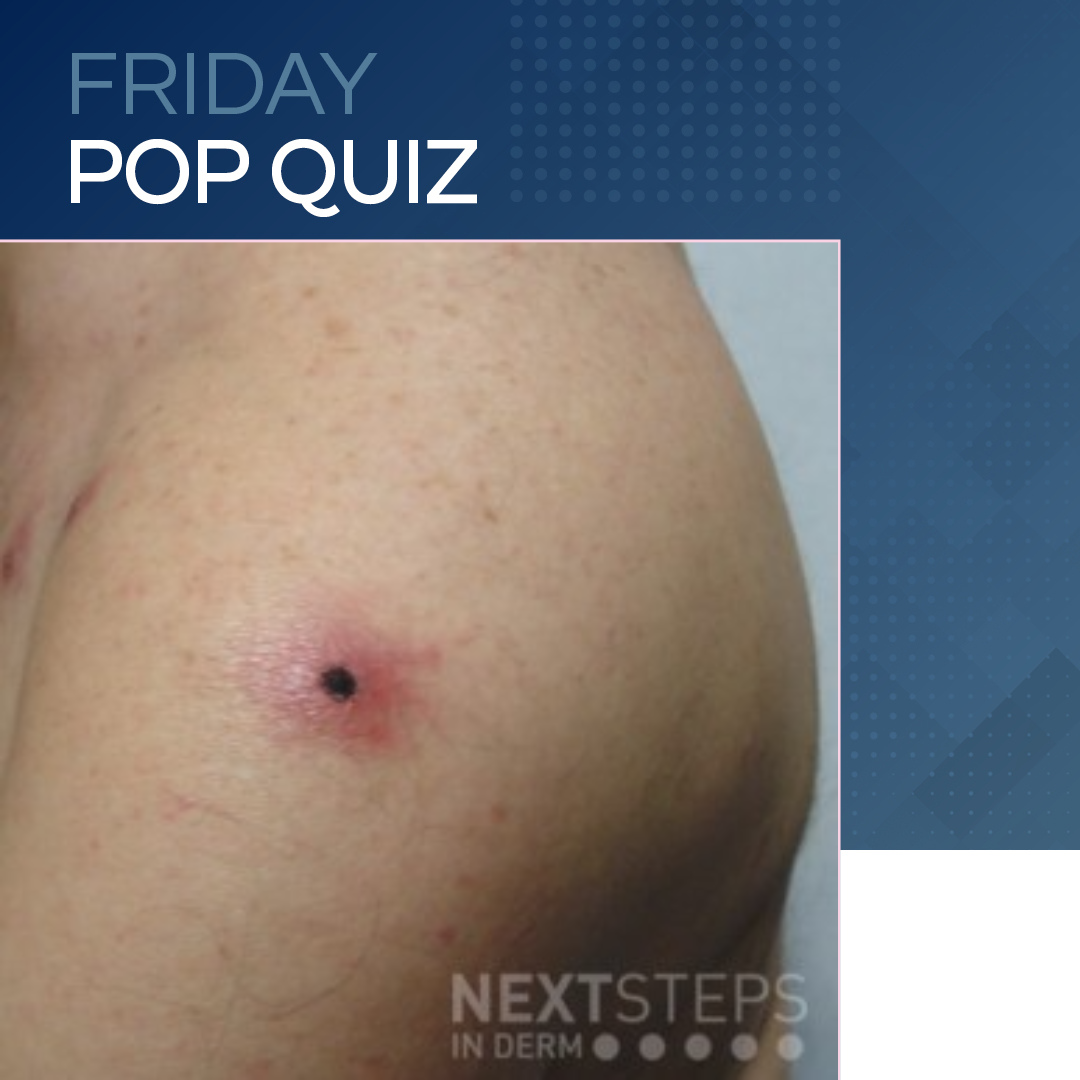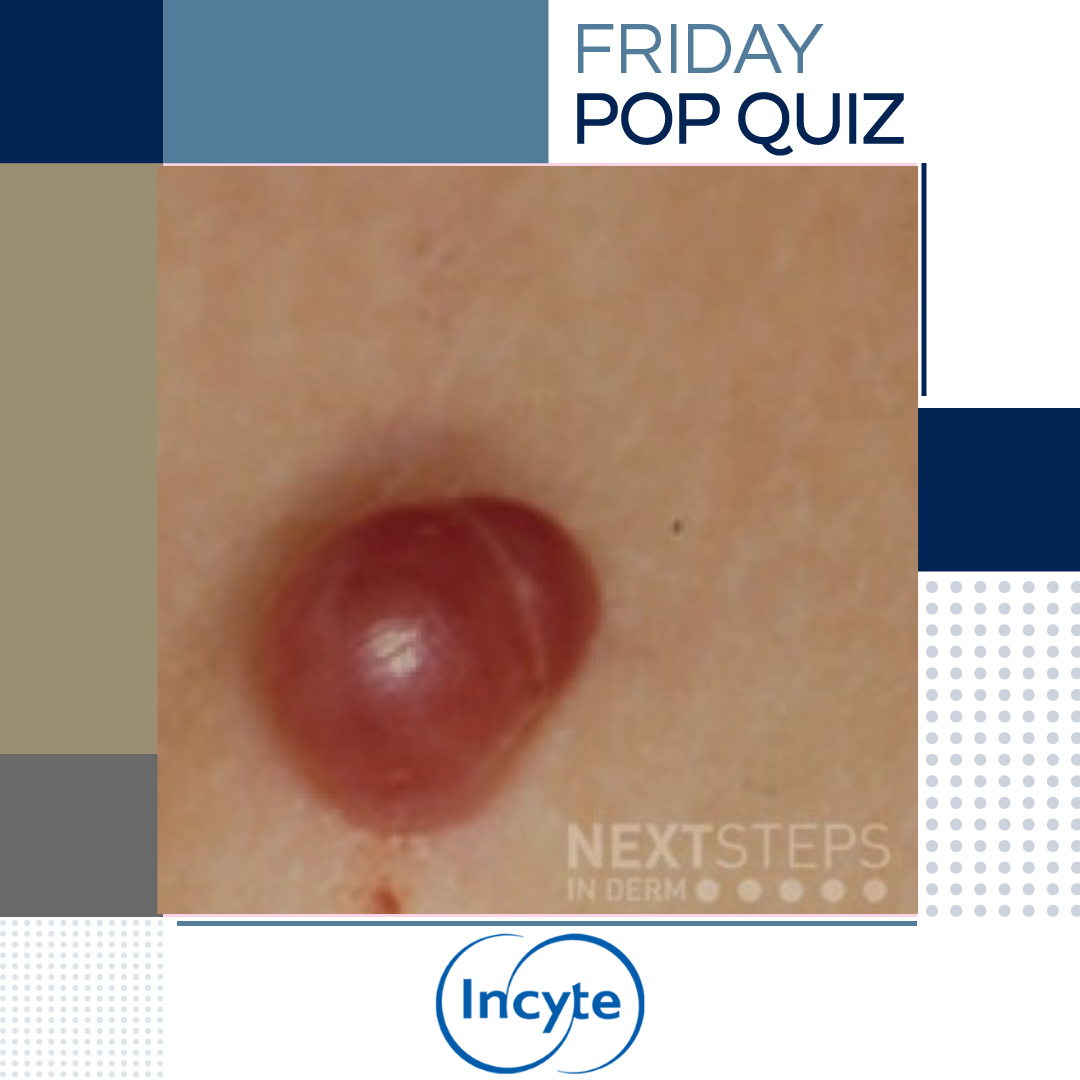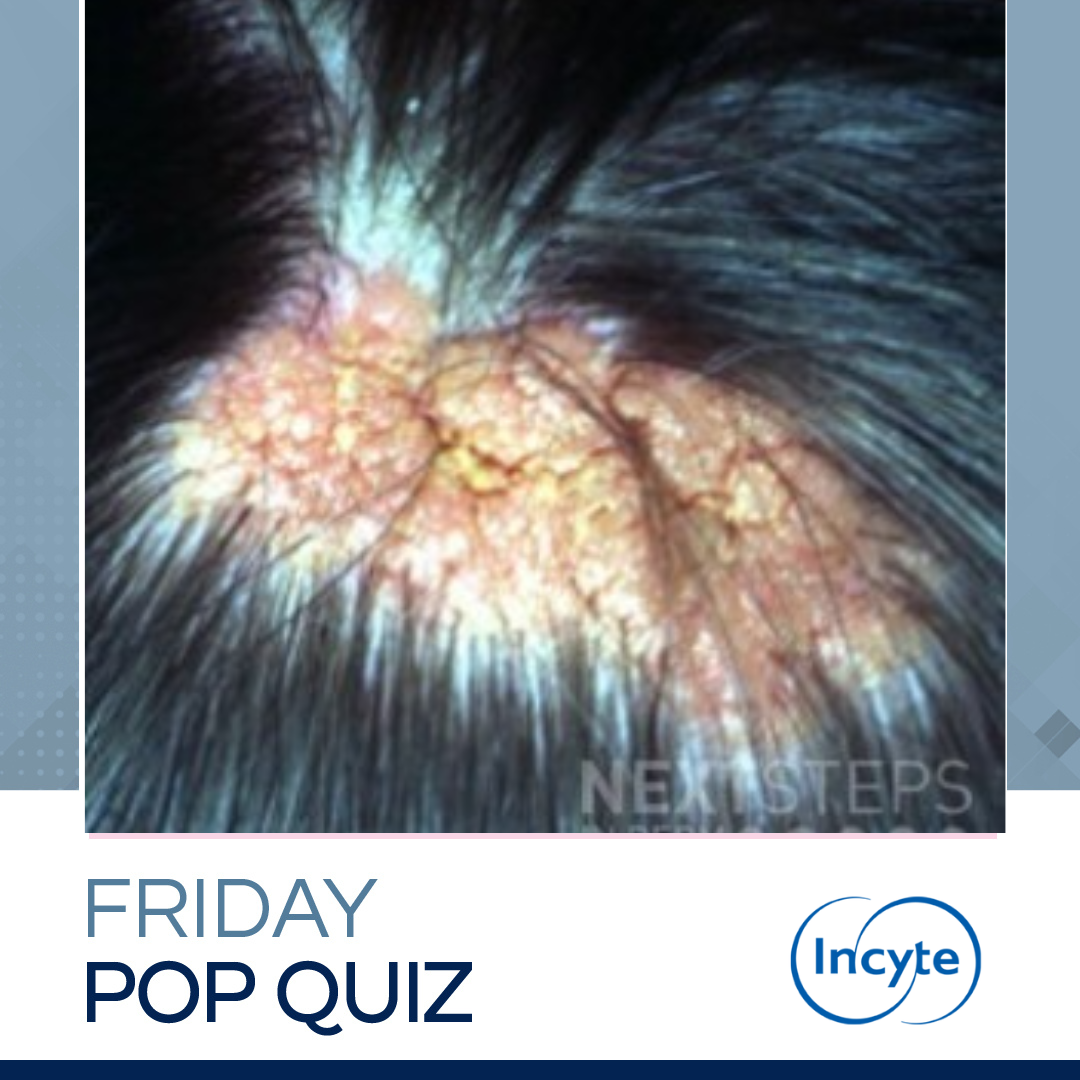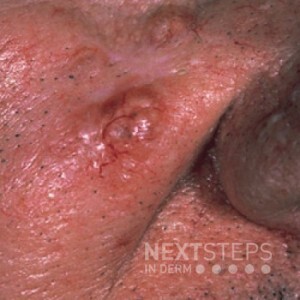Friday Pop Quiz 1/26/2024
208032080320803 A 34-year-old man with no past medical conditions presents with lesions as shown. Of the following, what is the most likely causative agent?
A. Aspergillus flavus
B. Group A beta-hemolytic streptococci
C. Pseudomonas aeruginosa
D. Klebsiella
E. Proteus
To find out the correct answer and read the explanation, click here. …
A 34-year-old man with no past medical conditions presents with lesions as shown. Of the following, what is the most likely causative agent?
A. Aspergillus flavus
B. Group A beta-hemolytic streptococci
C. Pseudomonas aeruginosa
D. Klebsiella
E. Proteus
To find out the correct answer and read the explanation, click here. …
 A 34-year-old man with no past medical conditions presents with lesions as shown. Of the following, what is the most likely causative agent?
A. Aspergillus flavus
B. Group A beta-hemolytic streptococci
C. Pseudomonas aeruginosa
D. Klebsiella
E. Proteus
To find out the correct answer and read the explanation, click here. …
A 34-year-old man with no past medical conditions presents with lesions as shown. Of the following, what is the most likely causative agent?
A. Aspergillus flavus
B. Group A beta-hemolytic streptococci
C. Pseudomonas aeruginosa
D. Klebsiella
E. Proteus
To find out the correct answer and read the explanation, click here. … 

 A 91-year-old man with a history of basal cell carcinoma presents for evaluation of the shown lesions on his scalp. His daughter, a nurse who is present with him for his appointment, notes that he had purulent bumps in the same area a few days earlier. Which of the following is the most appropriate treatment for the patient’s condition?
A. Oral cefdinir
B. Patch testing
C. Skin biop …
A 91-year-old man with a history of basal cell carcinoma presents for evaluation of the shown lesions on his scalp. His daughter, a nurse who is present with him for his appointment, notes that he had purulent bumps in the same area a few days earlier. Which of the following is the most appropriate treatment for the patient’s condition?
A. Oral cefdinir
B. Patch testing
C. Skin biop …  These lesions can occur with which of the following?
A. Morphea
B. Leprosy
C. Erythema nodosum
D. Sarcoid
E. Pregnancy
To find out the correct answer and read the explanation, click here.
Brought to you by our brand partner
…
These lesions can occur with which of the following?
A. Morphea
B. Leprosy
C. Erythema nodosum
D. Sarcoid
E. Pregnancy
To find out the correct answer and read the explanation, click here.
Brought to you by our brand partner
…  Which of the following lesions is most likely to appear in the shown lesion?
A. Basal cell carcinoma
B. Eccrine poroma
C. Prurigo nodularis
D. Squamous cell carcinoma
E. Trichoblastoma
To find out the correct answer and read the explanation, click here.
Brought to you by our brand partner
…
Which of the following lesions is most likely to appear in the shown lesion?
A. Basal cell carcinoma
B. Eccrine poroma
C. Prurigo nodularis
D. Squamous cell carcinoma
E. Trichoblastoma
To find out the correct answer and read the explanation, click here.
Brought to you by our brand partner
…  This patient has had over 200 of these lesions, what is the most likely genodermatosis?
A. Cowden
B. Birt-Hogg-Dube
C. Gorlin Syndrome
D. Carney
E. Bannayan-Riley-Ruvalcaba
To find out the correct answer and read the explanation, click here.
Brought to you by our brand partner Derm In-Review. A product of SanovaWorks.
…
This patient has had over 200 of these lesions, what is the most likely genodermatosis?
A. Cowden
B. Birt-Hogg-Dube
C. Gorlin Syndrome
D. Carney
E. Bannayan-Riley-Ruvalcaba
To find out the correct answer and read the explanation, click here.
Brought to you by our brand partner Derm In-Review. A product of SanovaWorks.
…